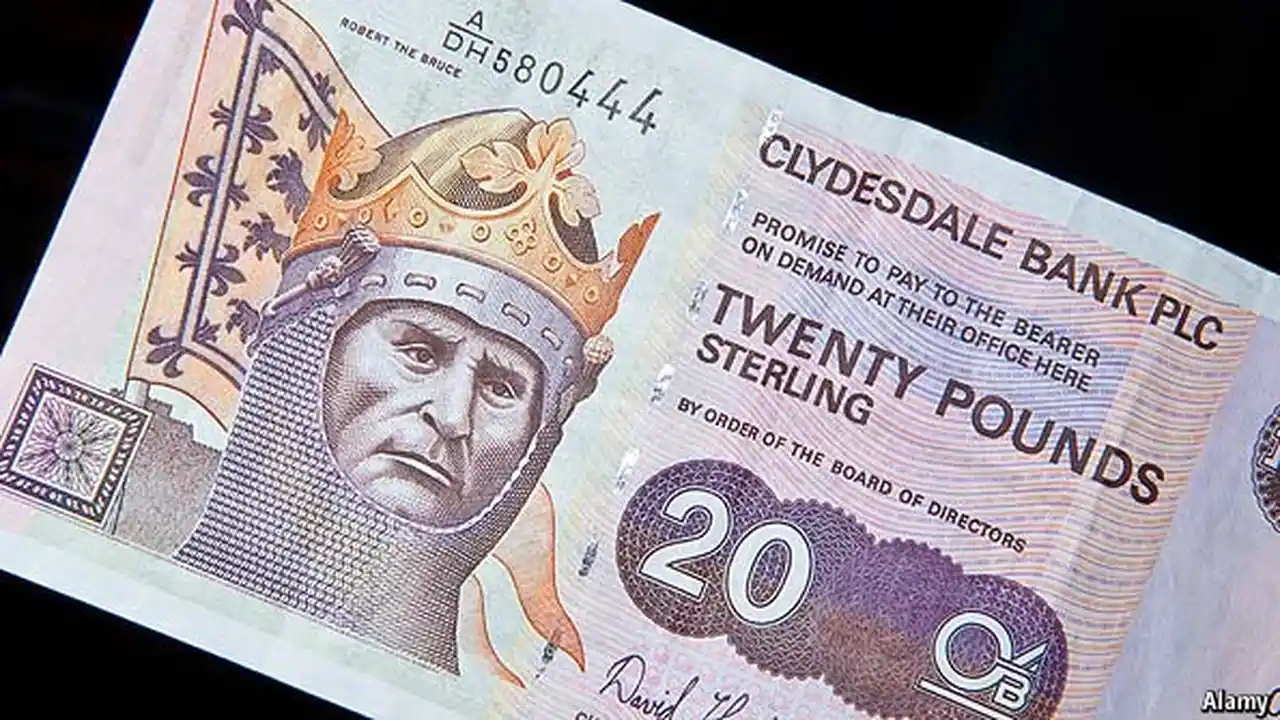Scotland Currency: Using Money in Scotland as an American
Sample meta description.

Understanding Scottish Currency and Exchange Rates for American Travelers
So, you're heading to Scotland! Awesome choice. Bagpipes, castles, breathtaking scenery… and a different currency to deal with. Don't sweat it! This guide will break down everything you need to know about using money in Scotland as an American tourist. We'll cover exchange rates, where to get the best deals, how to avoid fees, and even some product recommendations to make your trip smoother.
The Scottish Pound vs The British Pound Sterling: Currency Confusion Explained
Okay, first things first: Scotland uses the British Pound Sterling (£ - GBP). Yes, you might hear about "Scottish Pounds," and while some Scottish banks do issue their own banknotes, they're still technically Pound Sterling and are accepted throughout the UK. Think of it like state-specific quarters in the US – still dollars, just with a different design. Don't worry about getting stuck with "Scottish Pounds" you can't use; they're perfectly valid! However, you might find it a little harder to use them back home, so try to spend them before you leave. The exchange rate fluctuates daily, so it's best to check a reliable source like Google Finance or XE.com right before you exchange or withdraw money. As of today (October 26, 2023), it's roughly £1 = $1.22 USD, but that's just a snapshot. Always double-check!
Exchanging Dollars to Pounds: Best Options for American Tourists in Scotland
Now, how do you get your hands on those lovely Pounds? You have a few options, each with its pros and cons:
- Exchanging at Your Bank in the US: This is often the most convenient option. Call your bank a week or two before your trip to order the currency. You'll likely get a decent exchange rate, but they might charge a small fee.
- Exchanging at Currency Exchange Booths at the Airport (Both US and Scotland): Avoid these like the plague! The exchange rates are notoriously terrible, and they often tack on hefty fees. You're essentially paying a premium for convenience.
- Using ATMs in Scotland: This is generally the best option for getting cash. You'll get the interbank exchange rate, which is the rate banks use to trade with each other. It's usually the most favorable. However, be aware of potential ATM fees from both the Scottish bank and your own bank back home. Check with your bank beforehand to see what their international ATM fees are. Look for ATMs associated with major banks like Bank of Scotland or RBS (Royal Bank of Scotland).
- Credit Cards: Credit cards are widely accepted in Scotland, especially in tourist areas. Using a credit card with no foreign transaction fees is a great way to avoid extra charges. Again, check with your credit card company to see what their fees are.
Credit Cards vs Cash: Navigating Payment Options in Scotland for Americans
Scotland is pretty modern when it comes to payment methods. Credit cards are widely accepted in shops, restaurants, hotels, and even many pubs. However, it's always a good idea to have some cash on hand for smaller purchases, like tips, bus fares (especially in smaller towns), or that irresistible haggis roll from a local bakery. Visa and Mastercard are the most widely accepted credit cards. American Express is less common, especially outside of major cities. Before you leave, inform your credit card company of your travel dates. This will prevent them from flagging your transactions as suspicious and potentially freezing your card.
Avoiding Hidden Fees and Charges: A Guide to Smart Spending in Scotland
Nobody likes surprise fees! Here's how to minimize them:
- Foreign Transaction Fees: As mentioned before, choose a credit card with no foreign transaction fees. These fees can add up quickly, usually around 3% per transaction.
- ATM Fees: Be aware of ATM fees from both the Scottish bank and your own bank. Some banks have partnerships with international banks that allow you to withdraw cash without fees.
- Dynamic Currency Conversion (DCC): This is a sneaky trick where the merchant offers to charge you in US dollars instead of Pounds. While it might seem convenient, the exchange rate they use is usually much worse than what your bank would give you. Always choose to pay in the local currency (Pounds).
- Hidden Credit Card Fees: Some credit cards charge fees for cash advances, even when withdrawing money from an ATM. Avoid using your credit card for cash withdrawals unless absolutely necessary.
Tipping in Scotland: Understanding Gratuity Customs for American Tourists
Tipping in Scotland isn't as prevalent as it is in the US. In restaurants, it's customary to tip around 10-15% for good service. Check your bill first, as some restaurants automatically add a service charge for larger groups. In pubs, tipping isn't expected, but you can round up the bill or offer to buy the bartender a drink. For taxi drivers, rounding up the fare is common. For other services, like hairdressers or tour guides, tipping is optional but appreciated for exceptional service.
Budgeting for Your Scotland Trip: Estimating Daily Expenses in Pounds
How much money will you need per day? That depends on your travel style! Here's a rough estimate:
- Budget Traveler: £50-£75 per day. This includes hostel accommodation, budget meals, public transport, and free activities.
- Mid-Range Traveler: £100-£150 per day. This includes comfortable hotel accommodation, restaurant meals, and paid attractions.
- Luxury Traveler: £200+ per day. This includes high-end hotels, fine dining, private tours, and shopping.
Remember to factor in transportation costs between cities (trains, buses, rental cars), as well as souvenirs and unexpected expenses.
Essential Travel Products for Managing Money in Scotland: Recommendations and Comparisons
Here are a few products that can make managing your money in Scotland easier:
- Travel Wallet with RFID Blocking: Protect your credit cards from electronic theft. The Travelon Safe ID Essential Wallet sells for around $30 and offers RFID blocking technology, multiple compartments for cards and cash, and a secure closure. Another option is the Zero Grid Money Belt with RFID Blocking, priced around $25, which is worn discreetly under your clothes for added security.
- Portable Currency Converter: While your phone can do this, a dedicated currency converter can be useful if you don't have data access. The Pocketalk S Voice Translator (around $300) not only translates languages but also converts currencies. It's a pricier option, but great if you need both features. A simpler option is a basic calculator with a currency conversion app downloaded beforehand.
- Money Belt: A classic for a reason. Keep your cash and passport safe and hidden. The Peak Gear Travel Money Belt (around $20) is a popular choice, offering adjustable straps and a comfortable design.
- Travel Adapter with USB Ports: Scotland uses Type G plugs. Make sure you have a travel adapter to charge your devices. The BESTEK Universal Travel Adapter (around $25) is a great option, offering multiple USB ports and compatibility with outlets in over 150 countries.
Lost or Stolen Cards: What to Do in Case of Emergency in Scotland
Losing your credit card or having it stolen is a nightmare, but here's what to do:
- Report the loss or theft immediately to your bank or credit card company. They can cancel your card and issue a new one.
- File a police report. This is important for insurance purposes.
- Keep a copy of your passport and credit card numbers in a separate location. This will make it easier to report the loss and get replacements.
- Consider having a backup credit card and some emergency cash.
Mobile Payment Options in Scotland: Apple Pay, Google Pay, and Contactless Payments
Contactless payments are very common in Scotland. Apple Pay and Google Pay are widely accepted at most retailers that accept credit cards. Look for the contactless payment symbol (a sideways Wi-Fi symbol) at the point of sale. Using mobile payments can be a convenient and secure way to pay, as you don't have to physically handle your credit card.
Navigating Scottish Banks and ATMs: Tips for American Tourists
Scottish banks are generally open from 9:00 AM to 5:00 PM, Monday to Friday. Some branches may also be open on Saturday mornings. ATMs are widely available throughout Scotland, especially in cities and towns. When using an ATM, be aware of your surroundings and shield the keypad when entering your PIN. As mentioned earlier, try to use ATMs associated with major banks to minimize fees.
Understanding VAT (Value Added Tax) Refunds for Tourists in Scotland
VAT is a sales tax that's included in the price of most goods and services in Scotland. If you're a tourist from outside the European Union, you may be eligible for a VAT refund on certain purchases. To claim a VAT refund, you need to shop at stores that participate in the VAT Retail Export Scheme. Ask the store for a VAT refund form when you make your purchase. You'll need to present this form, along with your passport and receipts, to customs officials at the airport when you leave Scotland. The refund will be processed and sent to you, usually by mail or credit card. Keep in mind that there's usually a minimum purchase amount required to qualify for a VAT refund.
:max_bytes(150000):strip_icc()/277019-baked-pork-chops-with-cream-of-mushroom-soup-DDMFS-beauty-4x3-BG-7505-5762b731cf30447d9cbbbbbf387beafa.jpg)






